Set up a simple moth-attracting activity for a summer project
— National Moth Week is July 18 – 26
Story and photos by Anita Westervelt, Texas Master Naturalist
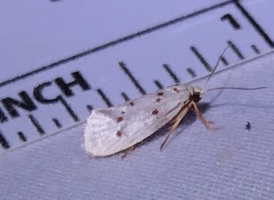
The number of moths far outweighs the number of butterflies around the world with a suspected 200,000 species existing to only 17,500 species of butterflies, according to the United States Department of Agriculture’s U.S. Forest Service.
Moths work under the cover of darkness; they don’t get the notice the colorful daytime fliers, the butterflies, get. If you want to see what secrets your yard holds at night, set up a mothing activity this summer.
A home yard set up can be as simple as draping a white sheet over a portable table and aiming a UV light onto the surface. There are a number of websites that explain mothing, show various set-ups and describe useful equipment.
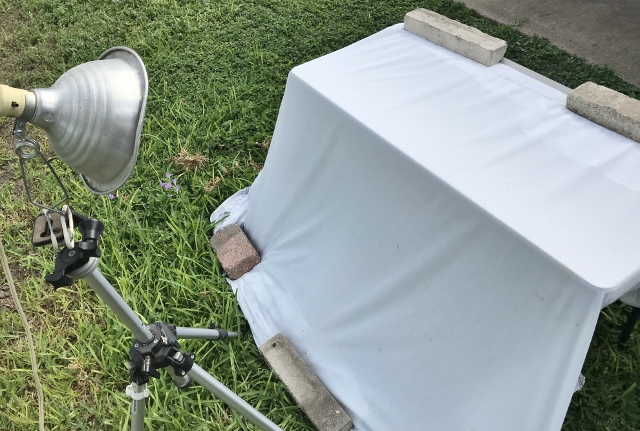
Prior to federal and local social distancing recommendations, South Texas Border Chapter Texas Master Naturalist, Joseph Connors, set up mothing events at nature centers in McAllen and Mission. As group activities in the Valley continue to be discouraged, Connors shares his experience for those who might want to set up a home station.
“It doesn’t take anything fancy,” Connors said, “just one blacklight and a white sheet.” During park and nature center moth nights, Connors used various configurations such as suspending a white sheet from existing arbors, hanging a sheet from the edges of open park shelter eaves, draping a sheet flat between sawhorses and simply covering a portable table with a sheet.
A blacklight, UV-A light or ultraviolet light bulb can be purchased to fit a standard lamp fitting. They are available in local grocery and home do-it-yourself stores and online. Connors likes to use an inexpensive aluminum work-light with a clamp. “There are fancier UV bulbs, and bar lights specifically for mothing, but the cheap ones will attract plenty of moths,” Connors said.
Other items that may be necessary include an extension cord, clamps or other implements to secure the sheet; tripod or stand to support light fixtures; and a flashlight or headlamp with white light to illuminate moths for photographing, if desired.
An important step is to select where to set up. Connors advised an open space, if possible. Results are better if the setup is not sheltered by trees or buildings.
Connors suggests turning the blacklight on at sunset. “You should have pretty good results in about two hours,” he said. “Some of the bigger moths seem to come out around midnight.” He recommends turning off the UV lights before day break so the visiting moths and bugs can fly off before the birds discover them for breakfast.
In Connors’ experience, the more consecutive nights he sets up, the more variety of moths and bugs the station attracts.
If you do experiment with a home yard moth sheet set up, your Smart phone camera is ideal for taking photos of moths and bugs that visit the sheet. Use your phone’s edit program to crop and enlarge the subject. To identify your visitors, photos may be uploaded to an iNaturalist phone app.
For information about an annual event, National Moth Week, July 18 – 26, visit this link: https://nationalmothweek.org/2020/05/15/nmw2020/
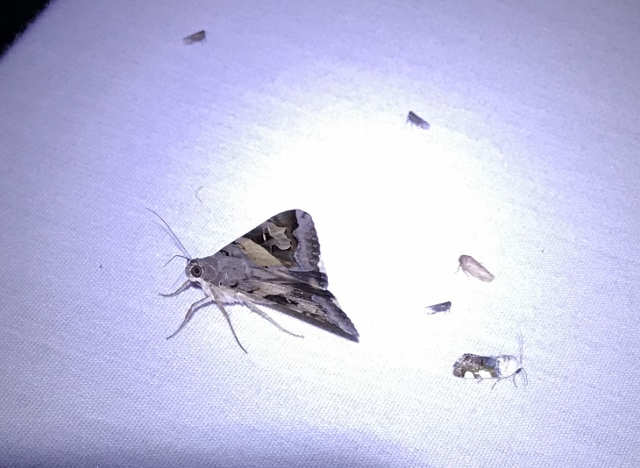
Side bar
Moth sheet set up pointers
By Anita Westervelt, Texas Master Naturalist
A small table draped with a white sheet is a simple moth sheet set-up with a blacklight in a clamp-style work lamp attached to a tripod or small ladder.
A half dozen moths and bugs or so might land on the sheet within a short time after turning on the blacklight at sundown.
The set-up can be left lighted all night, viewed periodically, or checked early in the morning before dawn.
You’ll be surprised at what shows up. Moths certainly, some tinier than a quarter of an inch. Bugs will visit, too, but don’t be dismayed, there are a lot of interesting bugs in the Valley. This time of year, you’ll most likely attract tiny, half-inch-long little mesquite cicadas and large, two-and-a-quarter-inch giant cicadas.
Popular moths to haunt your moth sheet set-up may include the indomitable graphic, Red-spotted lactura, Texas gray and Rufous-banded crambid moths.
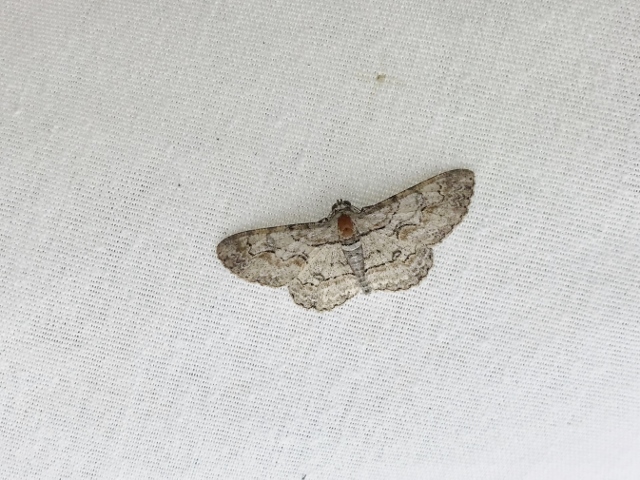
Turn off the blacklight before the sun comes up. Many moths and bugs will hang around well after daybreak, so be sure to re-check your station. If you’ve set up by draping a sheet over a side of a table, check underneath the table; the back of the lighted sheet may be full of visitors, too.
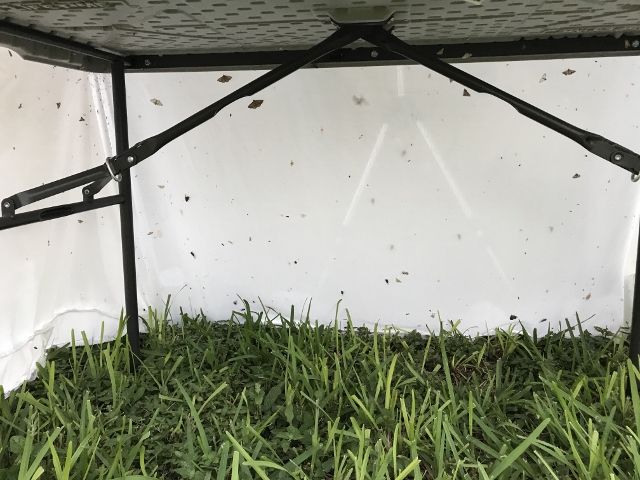
White light is necessary to photograph your moths and insects during the hours of darkness with the black light shining on the sheet.
There are a number of websites where you can identify moths and bugs; iNaturalist.org has a phone app that is free to download and self-explanatory to use.